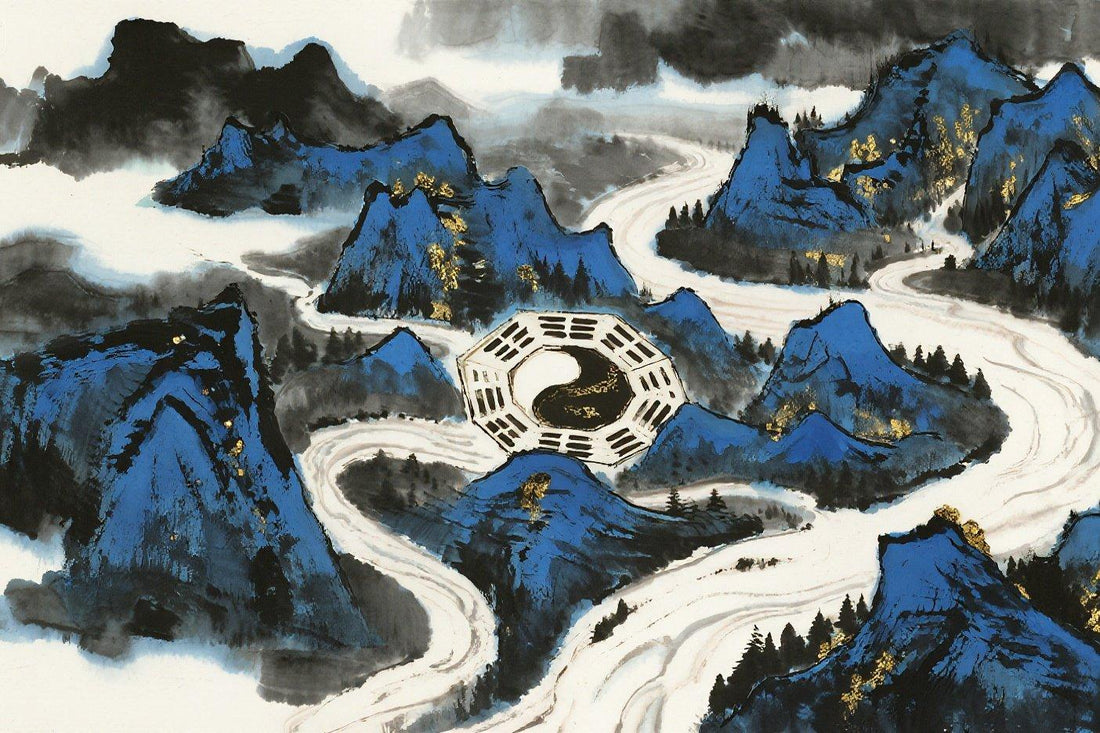
Feng Shui Experts Reveal the Ultimate Top 3 Landforms
Share
Before complex compass formulas emerged, ancient Chinese sages practiced Form School (形势派) Feng Shui—the art of reading landscapes as living bodies pulsing with environmental energy. This oldest branch of geomancy teaches that mountains are earth’s bones, rivers its blood vessels, and wind its breath. By analyzing mountain-water configurations, masters identified sites where cosmic vitality (Qi) gathers and flows, directly shaping human fortune. In today’s concrete jungles, these principles remain startlingly relevant. Join us as we decode how terrain sculpts destiny.
1、The Language of Land: Core Form School Principles
Form School distills environmental wisdom into three laws:
•Qi Follows Form:
Qi flows like water—mountains channel it, valleys collect it. As Zangshu (Book of Burial) states: "Qi rides the wind and scatters, but is retained when encountering water."
•The Four Guardians Template:
Ideal sites mirror the celestial animals:
▪Black Tortoise: Protective mountain at the rear
▪Azure Dragon: Gentle higher ridge left (east)
▪White Tiger: Lower rounded hill right (west)
▪Vermilion Bird: Open space with water feature ahead
•Living Landforms:
Jagged peaks = "angry" Sha Qi;
Curved hills = "benevolent" Sheng Qi.
•Case Study: Hongcun Village (Anhui)
▪Turtle-shaped hill (north) anchors the village
▪Artificial canals mimic dragon veins, channeling Qi
▪Result: 900 years of scholarly success (19 imperial exam laureates)
2、Mountain-Water Configuration: The Energy Anatomy
Topography acts as a Qi conductor:
|
Landform |
Energy Function |
Fortune Influence |
|
Armchair Mountains |
Gathers and stabilizes Qi |
Health, legacy stability |
|
Winding Rivers |
Slows and nourishes Qi |
Wealth accumulation |
|
Convergent Valleys |
Creates "Qi Drops" (energy vortexes) |
Innovation, opportunity hubs |
|
Exposed Cliffs |
Accelerates Qi into Sha Qi |
Conflict, financial loss |
Modern science validates this:
▪NIH studies show valley dwellers have 23% lower cortisol levels (Qi retention effect)
▪MIT airflow modeling confirms curved structures reduce turbulent "sha" winds by 40%
3、Urban Landscape Feng Shui: Modern Adaptations
Form School thrives in cities through symbolic landforms:
•Mountains → Buildings:
▪Tortoise: Skyscraper behind your office
▪Dragon: Cultural complex/library to your east
▪Tiger: Park or lower building to your west
•Water → Roads:
▪Gentle curves = Wealth-bringing "Jade Belt Roads"
▪Straight highways = "Arrow Sha" cutting Qi
•Green Corridors:
NYC’s Central Park acts as a giant "Ming Tang" (Bright Hall), collecting Qi for Manhattan’s skyscraper "mountains."
4、Five Terrain Alarms: When Landforms Threaten
Form School flags these hazardous configurations:
•Backless Sites (No Tortoise)
▪Risk: Chronic exhaustion, bankruptcy
▪Fix: Build earth berms or plant tall evergreens
•Tiger Dominance (Western structure > Eastern)
▪Risk: Lawsuits, workplace accidents
▪Fix: Install Azure Dragon symbols (green banners, vertical lights)
•Stagnant Water
▪Risk: Depression, immune disorders
▪Fix: Aerate ponds; add water features with flow
•Poison Arrows (Sharp angles pointing at entry)
▪Risk: Sudden misfortune
▪Fix: Use convex mirrors or hedges to deflect
•Isolated Hills
▪Risk: Social isolation (called "Lonely Phoenix Hill")
▪Fix: Connect with pathways or lighting
5、Form School in Practice: A 4-Step Site Analysis
Conduct your own landscape reading:
•Identify Guardians:
Use satellite maps to locate Tortoise (north), Dragon (east), Tiger (west), Bird (south) equivalents.
•Grade the Qi Flow:
▪Optimal: Meandering paths, layered greenery
▪Poor: Dead-end streets, exposed concrete walls
•Water Wisdom:
▪Positive: Gently flowing streams, clean pools
▪Negative: Drainage ditches, fountains with violent jets
•Human-Scale Harmony:
▪Buildings should "hug" the terrain, not dominate it
▪Preserve "breathing spaces" (min. 30% greenery coverage)
Form School’s Timeless Lesson:
In the words of Tang Dynasty master Yang Yunsong: "Observe the mountains as you would a lover—study their curves, their pulse, their whispers." Whether planning a city or arranging a balcony garden, remember: landscapes are energy fields first, scenery second. By honoring the dialogue between earth and sky, we design not just spaces, but destinies.
